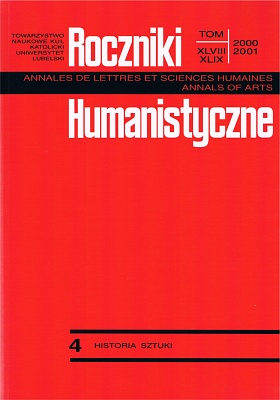The Madonna of Krosno and the Problems of Its Origin
Abstract
In the Krosno parish church, in the wardrobe of the baroque Virgin Mary of Loreto altar, behind the central painting, for many years a beautiful sculpture of Madonna with Child has found shelter. It is one of the few medieval works preserved in this typically baroque interior. It is a slender, upright wooden sculpture. The figure of Virgin Mary is shown in contrapposto, slightly bent in her waist, with her head turned right towards the naked Child, supported and presented by the Mother. The robes of Mary standing on a half-moon are richly pleated. On her long hair there is a decorative band. The Child with a lively and natural look, with His hand grasping a sphere – the symbol of supremacy, omnipresence and omni-causality. His breast and left wrist are decorated with painted string of coral beads that symbolise apotropaic powers, pointing also to the subsequent Jesus' Passion.
Researchers became interested in the Krosno sculpture in the 1960s. They situated it in the trend of post-Stoss sculpture, as a work of one of the Cracow workshops. A. M. Olszewski accurately noticed its similarity to Tilman Riemenschneider's workshop, which seems proper and justified on all accounts.
Copyright (c) 2001 Roczniki Humanistyczne

This work is licensed under a Creative Commons Attribution-NonCommercial-NoDerivatives 4.0 International License.





